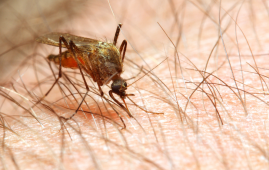

With nearly 87,000 participants, the world’s largest study on light exposure and its impact on mental health discovered that higher exposure to light at night increases a person’s risk for psychiatric disorders such as anxiety, bipolar disorder, and PTSD severity, as well as self-harm.
The study also discovered that increased exposure to daylight light can work as a non-pharmacological approach of lowering the risk of psychosis.
Those exposed to high levels of light at night raised their risk of depression by 30%, whereas those exposed to high levels of light during the day lowered their risk of depression by 20%. Similar patterns of outcomes were observed for self-harm behavior, psychosis, bipolar disorder, GAD, and PTSD.
These findings suggest that avoiding light at night and seeking greater light during the day could be an effective, non-pharmacological way of lowering major mental health disorders.
Associate Professor Sean Cain of the Monash School of Psychological Sciences and the Turner Institute for Brain and Mental Health in Melbourne, Australia, conducted the research, which was published today in the journal Nature Mental Health.
“Our findings have the potential to have a huge societal impact,” Associate Professor Cain stated.
“Once people realize that their light exposure patterns have a significant impact on their mental health, they can take some simple steps to improve their well-being.” It’s about having strong light throughout the day and complete darkness at night.”
The 86,772 people in the study were drawn from the UK Biobank and were assessed for their exposure to light, sleep, physical activity, and mental health. According to Associate Professor Cain, the influence of night light exposure was likewise unaffected by demographics, physical activity, season, or employment.
“And our findings were consistent when accounting for shiftwork, sleep, urban versus rural living and cardio-metabolic health,” he went on to say.
Humans have actually turned our biological systems on their heads in modern, industrialised times. Our brains evolved to perform best with bright light during the day and nearly minimal light at night, according to Associate Professor Cain.
“Today, humans challenge this biology by spending roughly 90% of the day indoors under electric lighting that is too dim during the day and too bright at night compared to natural light and dark cycles.” “It’s confusing our bodies and making us sick,” he explained.
For more information visit – Monash University
more recommended stories
 Neuroblastoma Drug Combo Extends Survival in Models
Neuroblastoma Drug Combo Extends Survival in ModelsA Promising Shift in High-Risk Neuroblastoma.
 How Soybean Oil Impacts Weight Gain and Metabolism
How Soybean Oil Impacts Weight Gain and MetabolismWhy Soybean Oil May Affect Metabolism.
 New Malaria Prevention Insights From African Biostatistics
New Malaria Prevention Insights From African BiostatisticsHow New Data Is Reframing Malaria.
 Coffee and Cognitive Function: Evidence Review
Coffee and Cognitive Function: Evidence ReviewA new narrative review in Cureus.
 World Summit Outlines Core Principles for Healthy Longevity
World Summit Outlines Core Principles for Healthy LongevityWhy Healthy Longevity Demands a New.
 Colorectal Cancer Screening Rates Low in Adults 45–49
Colorectal Cancer Screening Rates Low in Adults 45–49Recent UCLA research reveals that colorectal.
 Gut Immune Cells and Long-Lasting Antiviral Protection.
Gut Immune Cells and Long-Lasting Antiviral Protection.Breakthrough Findings on How Gut Immune.
 Mild Pancreatic Duct Dilatation Signals Higher Cancer Risk
Mild Pancreatic Duct Dilatation Signals Higher Cancer RiskEarly Structural Changes Offer Critical Clues.
 How the Uterus Senses Force During Labor: New Insights
How the Uterus Senses Force During Labor: New InsightsA new study published in Science.
 Fat-Free Mass and Brain Outcomes in Preterm Babies
Fat-Free Mass and Brain Outcomes in Preterm BabiesEarly Fat-Free Mass May Hold the.

Leave a Comment